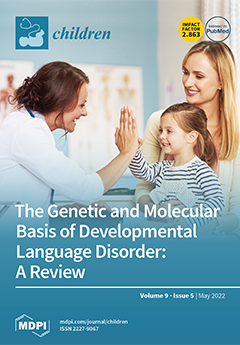Background: The most common conservative treatment for Adolescent Idiopathic Scoliosis (AIS) is bracing. However, several papers questioned the effectiveness of bracing for curves between 40° and 50° Cobb: the effectiveness in preventing curve progression could be as low as 35%. Seriate casting is considered a standard approach in early onset scoliosis; however, in the setting of AIS, cast treatment is seldom utilized, with only few studies reporting on its effectiveness.
Aim of the study: The main aim of the study is to determine whether a seriate casting with Risser casts associated with bracing is more effective in preventing curve progression than bracing alone in curves larger than 40°. Furthermore, the secondary endpoints were: (1) is there a difference in effectiveness of casting between Thoracic (T) and Thoracolumbar/Lumbar (TL/L) curves? (2) Does the ‘in cast’ correction predicts the treatment outcome? (3) What is the effect on thoracic kyphosis of casting?
Methods: This is a retrospective monocentric case–control study; through an Institutional Database search we identified all the patients treated at our institution between 1 January 2017 and 31 December 2020, with a diagnosis of AIS, Risser grade between 0 and 4 at the beginning of the treatment, at least one curve above 40° Cobb and treatment with either seriate Risser casting and bracing (Study Group, SG) or bracing alone (Control Group, CG). Standing full spine X-rays in AP and LL are obtained before and after the cast treatment; only AP standing full spine X-rays ‘in-cast’ are obtained for each cast made. Patients were stratified according to the curve behavior at the end of treatment (Risser 5): progression was defined as ≥6° increase in the curve magnitude or fusion needed; stabilization is defined as a change in curve by ±5°; and improvement was defined as ≥6° reduction in the curve.
Results: For the final analysis, 55 compliant patients (12 M, 43 F, mean age 13.5 ± 1.6) were included in the SG and 27 (4 M, 23 F, mean age 13.6 ± 1.6) in the CG. Eight (14.5%) patients in the SG failed the conservative treatment while 14 (51.3%) failed in the CG. Consequently, the Relative Risk for progression in the Efficacy Analysis was 1.8 (95% CI 1, 3–2.6,
p = 0.001), and the Number Needed to Treat was 2,4. No significant difference was found between the T and TL/L curves concerning the ‘progressive’ endpoint (z-score 0.263,
p = 0.79). The mean percentage of ‘in cast’ curve reduction was 40.1 ± 15.2%; no significant correlation was found between the percentage of correction and the outcome (Spearman Correlation Coefficient 0.18). Finally, no significant differences between baseline and end of FU TK were found (32° ± 16.2 vs. 29.6 ± 15.8,
p = ns).
Discussion: Seriate Risser casting for AIS with larger curves (>40° Cobb) is effective in reducing curve progression when compared with full time bracing alone in treatment compliant patients. The treatment is equally effective in controlling T and TL/L curves; furthermore, a slight but non-significant decrease in TK was observed in patients treated with casting. This type of treatment should be considered for AIS patients who present with large curves to potentially reduce the percentage of surgical cases.
Short Abstract: The aim of the study is to determine whether seriate Risser casting associated with bracing is more effective in preventing curve progression than bracing alone in curves larger than 40°. This is a retrospective monocentric case–control study; we identified all the patients treated at our institution with a diagnosis of AIS, Risser grade 0–4 at the beginning of the treatment, at least one curve above 40° Cobb (35° if treated with bracing alone) and treatment with either seriate Risser casting and bracing (Study Group, SG) or bracing alone (Control Group, CG). Fifty-five patients (12 M, 43 F, mean age 13.5 ± 1.6) were included in the SG and 30 (5 M, 25 F, mean age 13.9 ± 1.7) in the CG. Eight (14,5%) patients in the SG failed the conservative treatment while fifteen (50%) failed in the CG. Consequently, the Relative Risk for progression in the Efficacy Analysis was 1.8 (95% CI 1.3–2.6,
p = 0.001), and the Number Needed to Treat was 2,4. Seriate Risser casting for AIS with larger curves (>40°) is effective in reducing curve progression when compared with full time bracing alone. This type of treatment should be considered for AIS patients who present with large curves.
Full article






